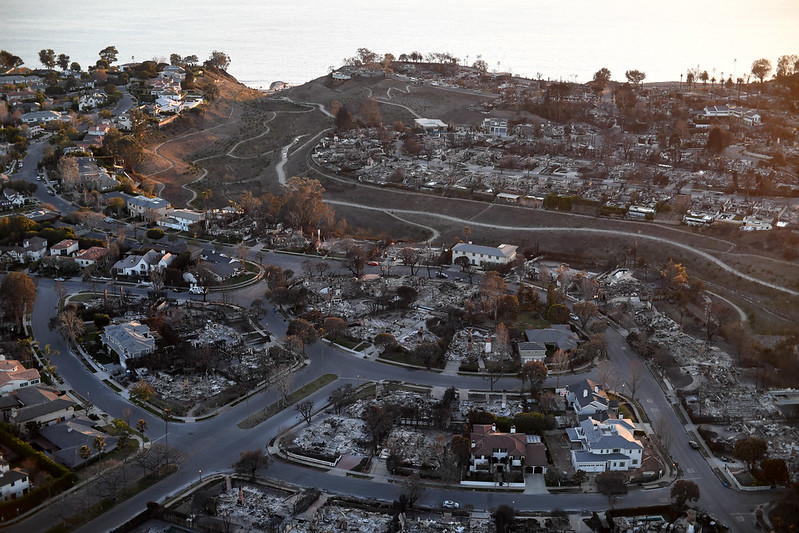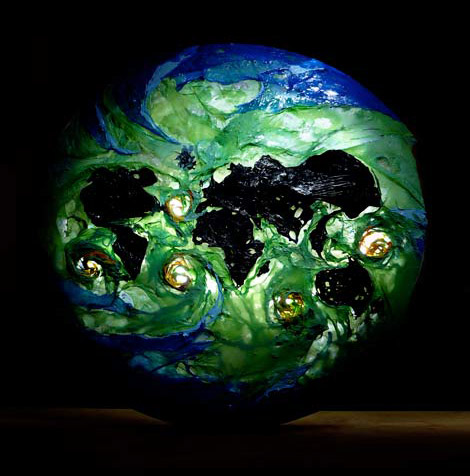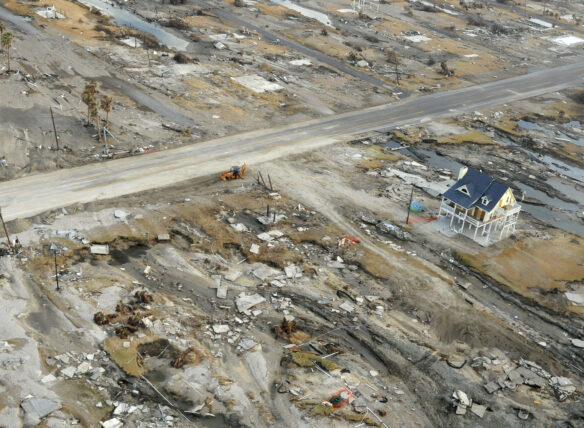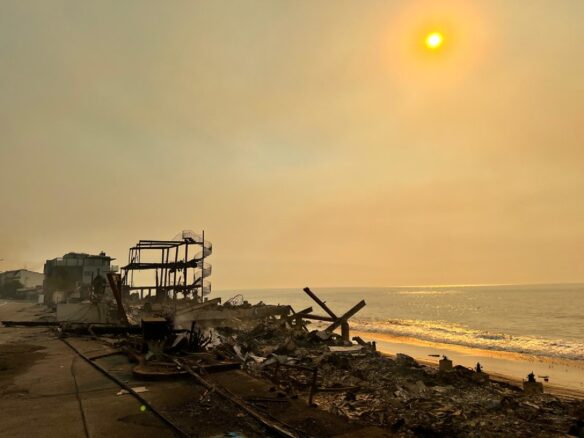Excerpt:
The charred and toxic remnants of thousands of destroyed homes, businesses, cars and electronics will eventually come to rest in the ocean.
Ash from the fires has been detected 100 miles offshore.
Public health officials have urged people to avoid several miles of beaches as recent rains wash contaminants into the sea.
The Reuben Lasker was about four miles off the coast of Manhattan Beach when ash began to rain upon the sea — first in delicate flurries, then in noxious clouds.
The fisheries research vessel had set sail days earlier for a coastal survey. It was supposed to be a routine voyage, the kind that the California Cooperative Oceanic Fisheries Investigations (CalCOFI) program embarks upon four times a year as part of the world’s longest-running marine ecosystem monitoring effort.
But when the Palisades and Eaton fires broke out, scientists aboard the National Oceanic and Atmospheric Administration ship inadvertently became the first investigators on the scene of a brewing disaster that could upend life underwater.
The smoke that has choked Los Angeles, the debris piled up along decimated streets, the charred and toxic remnants of thousands of destroyed homes, businesses, cars and electronics — nearly all of it, eventually, will come to rest in the ocean.
There is no precedent for how an urban fire of this magnitude could change the ecosystem that countless species, including our own, rely on for food and sustenance.
But there’s also no team better equipped to understand how the fires that transformed Los Angeles will affect life in the sea.
Unlike the smoke that emanates from rural wildfires, the charred material now entering the ocean is the stuff of “people’s homes: their cars, their batteries, their electronics,” said Rasmus Swalethorp, a biological oceanographer at UC San Diego’s Scripps Institution of Oceanography. “It’s certainly going to contain a lot of things that we ideally don’t want to see in our oceans — and in our soils, for that matter, and our water streams, and certainly not on our dinner plates…”
Santa Monica Closeup | 01-27-2025:
EPA Oversees Hazmat Cleanup of Hazardous Debris in Malibu After Palisades Fire Devastation
On Monday, January 27, 2025, the U.S. Environmental Protection Agency (EPA) led operations in Malibu to address environmental hazards caused by the devastating Palisades Fire. Hazmat technicians from GrayMar Environmental Services, Inc. (GrayMar) were on-site to manage the cleanup and ensure the safe handling of hazardous materials…









